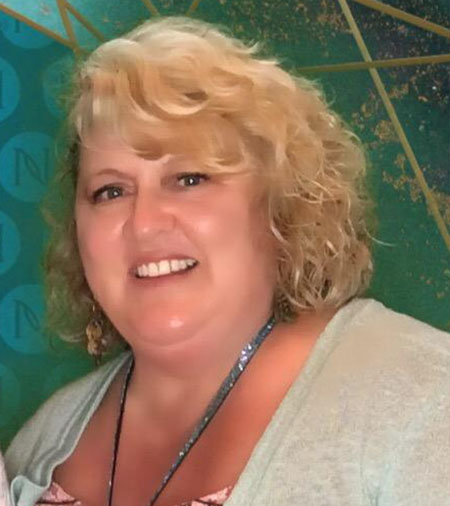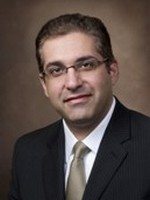Can you hear it now?
April 26, 2019
Stent silences whooshing sound for patient

It can be difficult to describe a medical condition others can’t hear or understand. That was the case for Susan McElfresh, a 55-year-old Lake in the Hills resident who in the spring of 2015 told her doctor she was hearing a loud whooshing sound in her ears. An MRI and CT scan turned up nothing unusual.
“My primary care physician couldn’t hear it, there was nothing in my ears, and he couldn’t find anything,” Susan explains. “He told me it was pulsatile tinnitus.”
By the next year it grew louder, and whenever Susan’s heart would race, it was almost deafening. When she pressed on her carotid artery, the sound would go away. But like stepping on a garden hose to stop the flow of water, she knew it was unreasonable and impossible to stop the flow of blood to her brain.
Susan had developed headaches, couldn’t concentrate at work, stopped going out with friends and lost faith in doctors.
The path to NCH
During a scan at another hospital for an unrelated medical issue, Susan happened to mention her condition to a nuclear medicine technician named Anna. Susan learned that Anna’s mom – NCH Staff Nurse Cathy Woltmann – also had pulsatile tinnitus, but she had been cured. Anna said that Ali Shaibani, M.D. was her mom’s physician, so Susan made an appointment with him that day.
“If I hadn’t met the technician and she hadn’t told me about her mother who had the same condition, I would have never gone down that path,” Susan says.
She met Dr. Shaibani in September of 2018.

“He began treating me for something he couldn’t tangibly see when everybody else kept pushing me aside,” Susan says. “He was wonderful.”
After tests and trying medication that didn’t seem to help, Susan asked Dr. Shaibani to take a second look at the arteries and veins in her head. He reviewed all of her scans and tests.
“He didn’t discount me,” she says. “I wanted to get this solved and he said, ‘I think it’s time we go ahead and do the procedure.’”
Dr. Shaibani said that Susan had a “subset of idiopathic intracranial hypertension (IIHTN) associated with acquired narrowing of the main veins (transverse sinuses) draining the blood out of the cranium/brain.”
“She was initially treated with medication but did not have relief of her symptoms,” Dr. Shaibani says. “She then came in for treatment which consisted of diagnostic cerebral angiography and venography and direct pressure measurements in the veins to document a significant narrowing.”
He put a stent in the larger transverse sinus to relieve abnormally elevated pressures and the noise Susan was hearing.
While putting in a stent involves risks, Dr. Shaibani says Susan responded very well to the treatment.
“Her chances of continuing to be symptom-free without recurrence are approximately 90 percent,” Dr. Shaibani says.
Waking up after the procedure, Susan says she felt “reborn.” The date was March 12, 2019.
“The first thing I noticed was that it was gone,” she says. “I couldn’t believe it. I was so happy. It was amazing.”
That’s when the ICU nurse, knowing the story that led Susan to NCH, called Cathy Woltmann.
“You have no idea how much you impacted me,” Susan told Cathy through tears. “You gave me hope, and I didn’t give up.”
The two compared stories and cried together. Only patients who have pulsatile tinnitus understand what it’s like to suffer from it.
“It was quite a coincidence that I happened to be working that day,” says Cathy. “Susan explained that I had to meet her because I saved her life. I said, ‘Oh, I get it because Dr. Shaibani saved my life, too.’”
Cathy’s story
Cathy endured 22 months of pulsatile tinnitus and says it drove her to nearly lose her mind. To illustrate the severity, she shared how a couple of the members of a pulsatile tinnitus Facebook support group decided to end their lives due to the endless, maddening noise.
When Dr. Shaibani decided to put a stent in her brain and explained the risks, Cathy told him he could do whatever he wanted.
“I was willing to try anything,” Cathy says. “When I woke up in the recovery room, I couldn’t speak. I was so emotional. I just started crying because it was gone.”
Like Susan, Cathy recalls the exact date of the procedure. “February 25, 2016 was my cure date,” Cathy says.
Silence is golden
When Susan returned to work a week later, she couldn’t stop grinning.
“Everyone said, ‘You look so happy,’” she recalls. Her family noticed a difference in her, too. That’s when she realized how much the whooshing sound in her ears had affected her quality of life.
“Now I feel like I can do anything!” Susan says. “I have to pinch myself every day.”
Learn more about the Neuroscience Center at NCH.
No case is the same; results may vary.